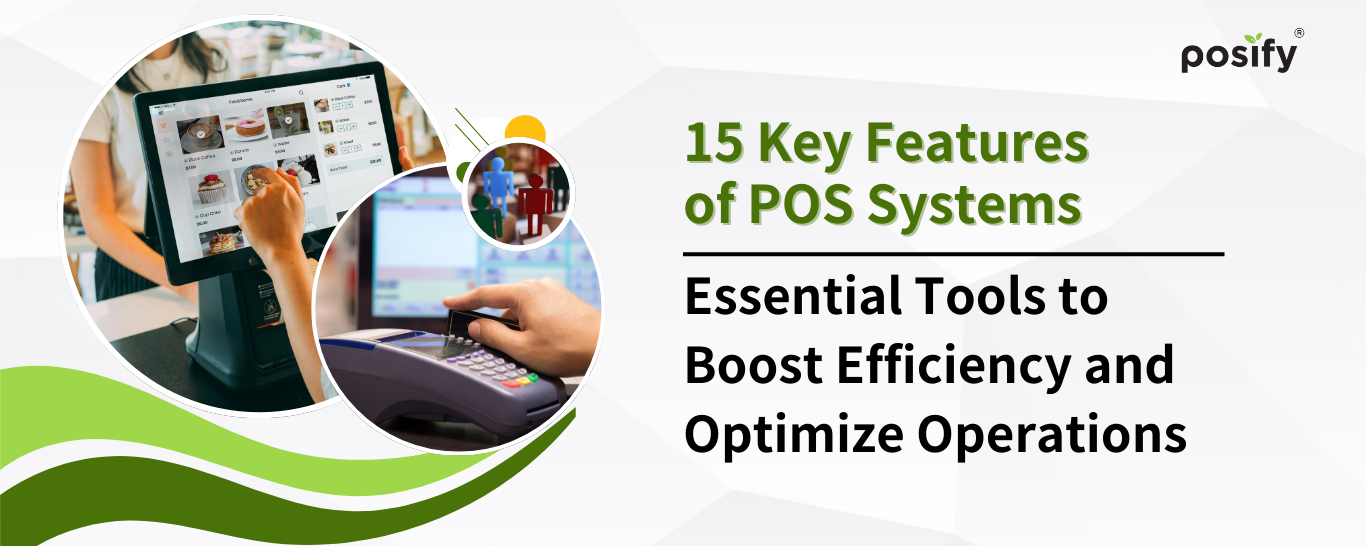15 Key Features of POS Systems: Essential Tools to Boost Efficiency and Optimize Operations

In today’s highly competitive retail market, a fully-featured POS system (Point of Sale system) is no longer just a checkout tool. It has become a digital powerhouse that helps merchants enhance operational efficiency, customer experience, and decision-making accuracy. For retailers in Hong Kong, choosing a POS system with essential features is the first step toward smart retail.
This article will detail 15 core features of modern cloud-based POS systems, helping you make informed decisions when selecting or upgrading your system. Whether you run a fashion store, F&B outlet, beauty salon, convenience store, or general merchandise shop, these features are closely tied to your business needs.
1. Sales Transactions and Checkout Efficiency Features
1.1 Integration of Multiple Payment Methods
Modern POS systems are no longer limited to cash or credit card payments. They can integrate a variety of digital payment methods, including popular local and international platforms such as Octopus, Alipay HK, WeChat Pay, Apple Pay, Google Pay, and UnionPay mobile payment tools.
1.2 Fast Scanning and Product Search
To enhance operational efficiency and reduce errors, modern POS systems typically support barcode scanning and smart search features:
-
Quick barcode input: Frontline staff can scan products with a barcode scanner to instantly populate product name, price, and inventory details, avoiding manual entry errors.
-
Keyword smart search: Systems allow fuzzy searches by product name, category, or SKU, making it easy to locate products even with thousands of SKUs.
-
Ideal for high-SKU businesses: Particularly useful for retail (e.g., convenience stores, pharmacies, hardware) and multi-product stores, improving checkout speed and customer service.
-
Supports self-checkout applications: Can integrate with self-checkout stations, allowing customers to scan products themselves, increasing efficiency and reducing labor costs.
1.3 Cashier Management and Permission Settings
POS systems include employee access control features, allowing store managers to monitor and regulate staff operations:
-
Hierarchical permissions: Assign different permissions based on roles (e.g., cashier, supervisor, store manager) for tasks like order creation, discounts, transaction cancellation, returns, and price modifications.
-
Prevent improper operations: Restrict unauthorized discounts or deletion of sales records to minimize revenue loss.
-
Transparent transaction records: Each transaction logs the operator and timestamp, enabling audits and accountability.
-
Integration with performance management: Some systems track individual employee sales performance, average transaction value, etc., supporting incentive and evaluation programs.
2. Inventory and Product Management Features
2.1 Real-Time Inventory Sync
Modern POS systems can synchronize inventory data in real-time, keeping both sales terminals and back-office management aligned. Sales staff, store managers, and even headquarters inventory teams can instantly access stock levels, sales trends, and low-stock alerts. This reduces human errors or data lag and can trigger automatic restock recommendations, preventing lost sales and customer attrition. This feature is particularly important in fast-moving retail or F&B environments with high product turnover.
2.2 Unified Multi-Store Inventory Management
For businesses with multiple stores, POS systems enable centralized inventory management. Headquarters or management can monitor stock across all branches without manual reports, improving efficiency. Cross-store transfers are also supported, allowing items from well-stocked locations to replenish stores running low, optimizing stock flow and minimizing overstock or deadstock risks.
2.3 Product Categorization and Variant Settings
POS systems offer high flexibility in product setup, especially for items with multiple styles, colors, sizes, or packaging. Each variant can be tracked independently, facilitating inventory management. For example, a T-shirt with various sizes and colors can have separate stock units for precise tracking. This also aids sales staff in recommending products and enhances customer shopping experience through clear product information.
3. Customer Relationship Management (CRM) Features
3.1 Customer Data Collection and Analysis
POS systems automatically store customer purchase records, spending habits, and contact information, enabling targeted marketing and personalized promotions.
3.2 Loyalty Points and Membership Level Management
Reward programs and automated membership upgrades boost repeat purchases. Systems can also send promotional messages or birthday offers to enhance customer loyalty.
3.3 Email and SMS Marketing Integration
Some POS systems include built-in email and SMS marketing tools, allowing merchants to target different customer segments with promotions, increasing engagement and conversion rates.
[Posify POS System Migration Offer] Buy 2 years, get 2 years free plus 25% off, zero transaction fees! Fully integrate online store and physical outlets!
Contact our professional consultants via WhatsApp to learn more about the migration offer!
WhatsApp button
4. Data Analytics and Operational Reporting Features
4.1 Sales Reports and Performance Analysis
Daily, weekly, and monthly sales reports are automatically generated and can be broken down by staff, product category, and time period, providing management with precise decision-making insights.
4.2 Best-Selling Products and Inventory Turnover Statistics
Identify top-selling and slow-moving items and calculate stock turnover rates, helping merchants optimize purchasing strategies and pricing models.
4.3 Employee Performance Tracking
POS systems track individual staff sales performance and transaction volume, supporting bonus evaluation, training, and frontline operational efficiency.
5. System Scalability and Technical Support Features
5.1 Cloud POS System Support
Cloud-based POS solutions make data accessible beyond a single terminal. Merchants can view business data anytime, whether at the office, home, or on business trips, enhancing management flexibility.
5.2 API and Third-Party Platform Integration
Supports integration with accounting software, e-commerce platforms, ERP systems, and other tools, automating workflows and reducing manual input errors.
5.3 Multilingual Interface and Technical Support
Considering Hong Kong’s multilingual environment, most POS systems support both Traditional Chinese and English, with localized technical support teams to ensure long-term system stability.





